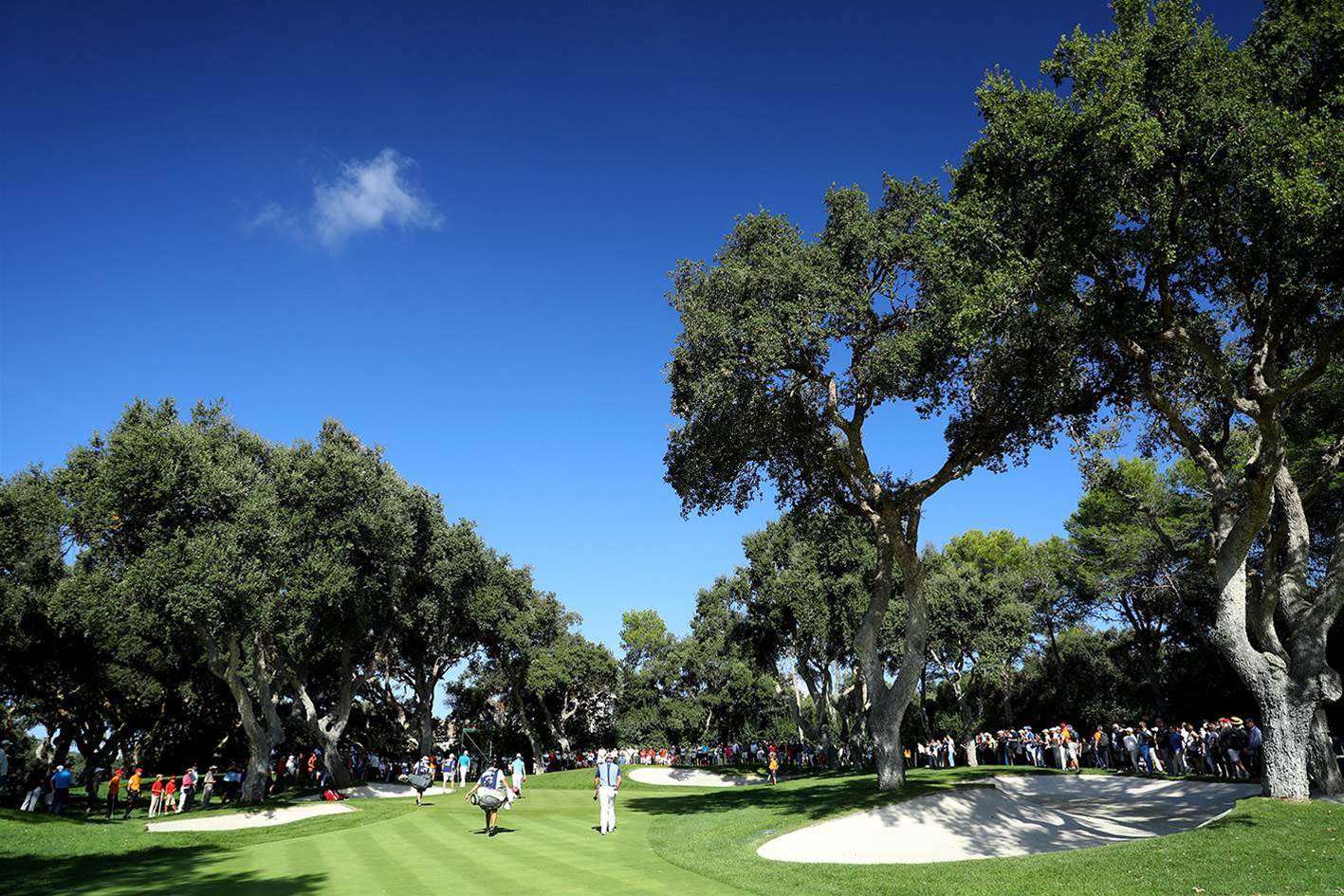The question before me is simple: what am I most disappointed to see on any golf course?
The first is obvious and one that will no doubt resonate with all of you: Slow play. It is the one thing that affects me most during an event. Everyone has a natural pace, so some people are just naturally slow in everything they do. My father is one of those. But even if that is the case, there is – at least to me – little excuse for playing golf slowly. If you do all the little things between shots quickly, you can almost take as long as you want over a shot and not fall behind.
On Tour, the most frustrating aspect of slow play is being ready to hit, then looking over to see the guy with the honour just about to start his pre-shot routine. In other words, he has been doing something else entirely at a time when he should have been working out his yardage and figuring what club he needs to use. It is just so thoughtless and selfish. And it drives me nuts.
I get that some players can have trouble taking the club away from the ball – Kevin Na, Sergio Garcia and Ben Crane spring to mind. And I have sympathy with such a problem. But still. It is relatively easy to get to that point quickly – even if you then struggle to start
the backswing.

Architecturally, my biggest pet peeve is what I call “double hazards.” For example, a fairway bunker directly behind a tree. That sounds ridiculous. But I see it so often, even on “great” courses where a tree planted 40-years ago has grown to be simply inappropriate. Valderrama in Spain has a few of those.
The idea of any hazard is to test the recovery skills of players. But put a tree in front of that hazard and you bring everyone down to the same level. Everyone is reduced to chipping out sideways. When I see that happening I always wonder why the bunker and tree are not replaced by a small water hazard, where you take a one-shot penalty and move on. That is, in effect, what has been created by “doubling” the bunker and the tree. So yes, have a tree. Or a bunker. But not both.
Another thing I don’t like are courses that are overly soft, which, by the way, means 95 percent of courses in the United States. Australia is, thankfully, the opposite. We are a drought country and so are sensible with water.
One last thing. I like long grass on golf courses. But I don’t like cultivated, harvested, verdant rough. - Geoff Ogilvy
Anyway, mud on the ball and shots plugging as they land takes 90 percent of the fun out of golf. For me at least. All because of vanity and the misguided notion that golf courses are supposed to be the sort of verdant green you only see in magazine ads for paint. Which is not to say I have anything against green grass, as long as the course plays firm and fast.
I don’t like to see too many tees on any hole. There should be just a couple of tees, three at most. Front, middle and back. That covers every level of player. Besides, if in doubt tee-off wherever you want, from the place you think you will have the most fun.
Speaking of fun – or lack of it – a bad short par-4 is something else I never like to see. A good short par-4 is one of the most pleasurable things on any course. That or a short par-3. I have never heard anyone complain about a hole being too short. But everyone complains when a hole is too long. Golf is inherently hard. On a flat piece of land with no hazards, the game can still be difficult. The 18th hole on the Old Course at St. Andrews is proof of that.
So why do you need to build crazy-long holes on steroids? I don’t get those.
The sad thing is that the great short par-4 is almost extinct. But bad short par-4s are everywhere. A great short par-4 gives the scratch player an almost automatic par. So if I want to make a par every time, I can. With ease. But if I want to make a three or even a two, things get tricky. Danger lurks if you go looking for it. That’s when I can make five or six. And that is what makes a great short par-4.

To sum up: The more conservative you are off the tee, the easier it should be to make par and the harder it should be to make birdie. But if you are aggressive off the tee, the birdie potentially gets easier – albeit riskier.
Sadly, most of the short par-4s I see are not short enough. Too often, the architect falls into the trap of trying to make a hard par-4 that is also short. Yes, they are drivable. But the lay-up is harder than the drive. So everyone ends up going for the green in one. Then it’s all about luck. If you get fortunate, you make par or birdie; if you don’t, you make par or bogey. There is no real fun involved in any of that.
Let’s talk about green speeds. Too fast is no good. I loved the greens I grew up on in Melbourne as a kid. But, looking back, they were crazy fast. It was an obsession back then. Don’t get me wrong. Slope on greens is always interesting. But the more slope you have, the slower the surfaces must be. So there is a “sweet spot” for every course, the point where the speed of the greens is appropriate to their design. Firm and slow seems to me to be best. Combine those two and you can have pins on slopes. Make the firmness of the green the most difficult aspect, not the speed.
Golf today is more and more about putting and less about ball-striking. Especially at the elite level, who wins and loses is almost all down to putting, which is wrong. That’s why the challenge of links golf is so great. Golf at the seaside balances the importance of the two main aspects of the game.
Think about it. Slower (but still firm) greens give you a little more margin for error when putting – and less margin for error with your full shots. You can still stand out in different ways. Good strategy. Good decision-making. Good shot-making. In contrast, there’s only one way to really excel when the greens are super-fast and that’s to putt really well. Relatively slow, firm greens make ball-striking and putting equally important. It’s really that simple.
One last thing. I like long grass on golf courses. But I don’t like cultivated, harvested, verdant rough. That is the game’s most unimaginative hazard. It’s boring, like bad lies in bunkers. If you force everyone into a bad lie, you remove skill. And that’s what long rough does. From that sort of lie, we’re all hacking out. There’s no advantage to being good.
Now that I really don’t like.
Related Articles

Ogilvy: All that really matters is what the ball does

Luke Brown’s Wild Shot at Going Pro




.jpg&h=115&w=225&c=1&s=1)








